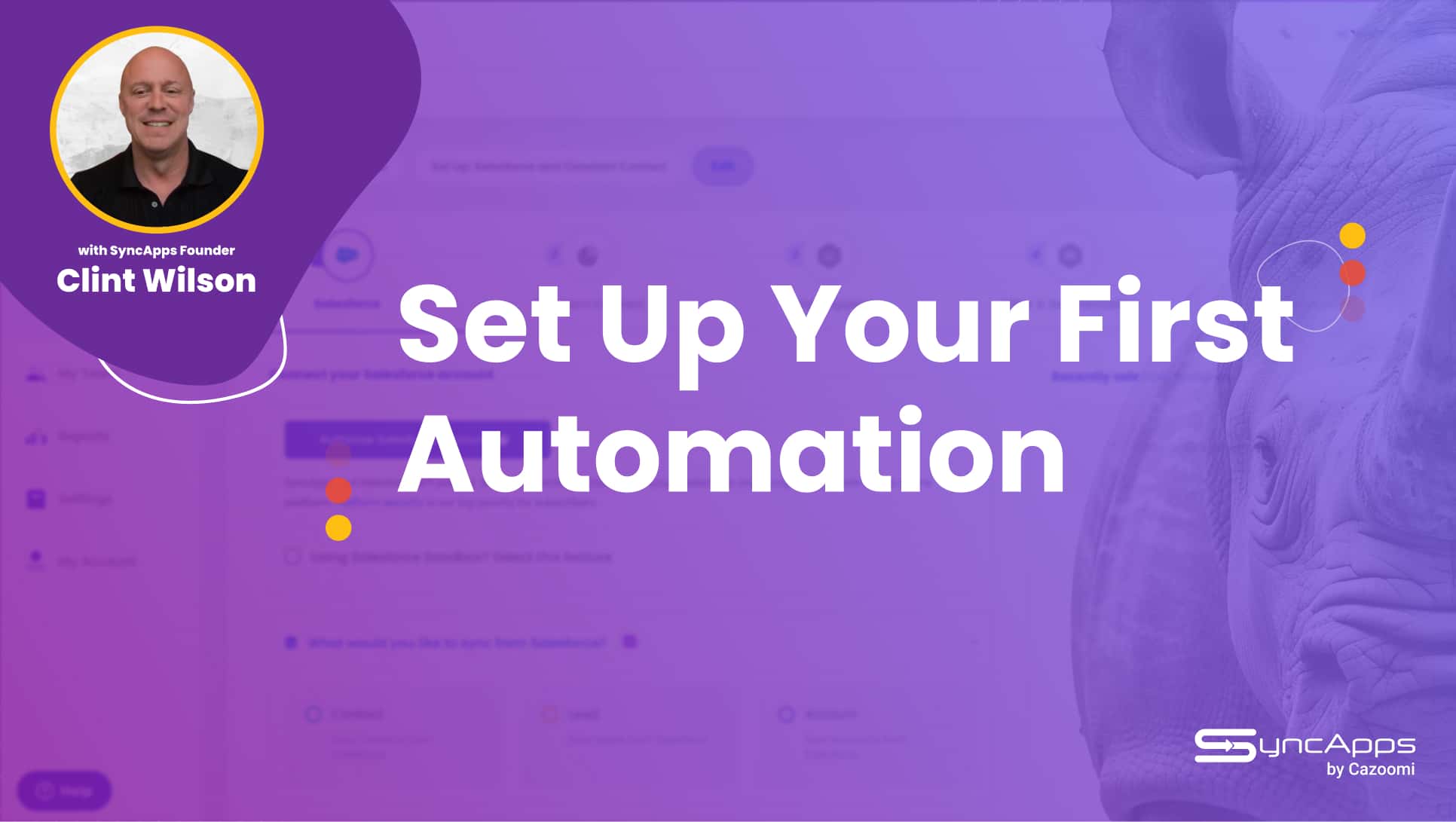Data Integration Glossary: Key Terms Explained

The Most Comprehensive Data Integration Glossary: All the Terms You Need to Know
Do some of the data integration terms leave you puzzled? Worry not, you’re not alone.
We’ve been in the integration field for nearly two decades and we still raise an eyebrow when we hear some of the terms or acronyms. So, we’ve put together this data integration glossary that will help you de-mistify the key terms in the industry.
Yes, even those that sound incredibly complex and complicated. We promise you data integration isn’t magic. It’s just a way to manage the insane amounts of data we create every day.
Don’t forget to bookmark this data integration glossary, so you can come back to it whenever you need extra clarity about a term. Don’t sleep just yet 🙂
Data Integration Glossary: 30+ Terms You Need to Know
- API (Application Programming Interface)
An API is a set of protocols and tools that allow different software applications to communicate with each other. APIs enable data integration by providing a standard way for applications to exchange information. For example, when a web application requests data from a database, it typically uses an API to perform this operation seamlessly.
- Aggregate Data
Aggregate data refers to data that is compiled from various sources and presented in a summarized format. This type of data is often used in reporting and analytics, as it provides insights without revealing individual data points. For instance, a company might aggregate sales data from various branches to analyze overall performance.
- AI (Artificial Intelligence)
AI refers to the simulation of human intelligence processes by machines, particularly computer systems. In the context of data integration, AI can enhance data processing and analysis, making it easier to extract meaningful insights from large datasets.
- Analytical Data Integration
Analytical data integration involves combining data from multiple sources to support analytical processes. This type of integration is crucial for businesses that rely on data analysis for decision-making and strategy formulation.
- Batch Processing
Batch processing refers to the execution of a series of jobs on a computer without manual intervention. In data integration, batch processing is used to handle large volumes of data at scheduled intervals, allowing for efficient processing of data in bulk. For example, businesses may perform batch processing overnight to integrate sales data from the previous day.
- Business Intelligence (BI)
Business Intelligence encompasses the strategies and technologies used by companies to analyze business data. Data integration plays a crucial role in BI by combining data from different sources to provide comprehensive insights. This integrated data is then used to inform strategic decisions and improve operational efficiency.
- Cloud Integration
Cloud integration refers to the process of configuring multiple cloud services to work together. This type of integration allows businesses to connect their cloud applications and services for better data flow and management. Cloud integration solutions often facilitate seamless data exchange between SaaS (Software as a Service) applications.
- Continuous Data Integration
Continuous data integration is the process of continuously updating and integrating data from various sources in real-time. This approach is essential for businesses that require up-to-date information for decision-making and operational efficiency.
By the way, did you know that SyncApps is one of the few integration platforms that offers real-time sync? For instance, your Salesforce data is migrated to Mailchimp in real-time so you always have access to everything in a single dashboard.
Try it for yourself! Grab a free 28-day trial of SyncApps’ real-time integration.
- Data Cleansing
Data cleansing is the process of identifying and correcting inaccuracies or inconsistencies in data to improve its quality. Effective data integration often involves data cleansing to ensure that the information being integrated is reliable. For example, duplicate records may be removed during the cleansing process to ensure data integrity.
- Data Connector
A data connector is a tool or software component that facilitates data exchange between two or more systems. Connectors allow applications to access data stored in other applications or databases, simplifying the integration process.
- Data Governance
Data governance involves the management of data availability, usability, integrity, and security in an organization. It establishes policies and procedures for effective data management and helps ensure that data integration efforts align with organizational goals. Robust data governance is critical for maintaining data quality and compliance with regulations.
- Data Lake
A data lake is a centralized repository that allows organizations to store vast amounts of structured and unstructured data. Data lakes facilitate data integration by providing a platform for data to be collected, processed, and analyzed. This architecture supports various data types, making it easier for organizations to harness the value of their data.
- Data Mart
A data mart is a subset of a data warehouse that focuses on a specific business line or team. Data marts are designed to provide relevant data for analysis and reporting purposes, making them a key component of data integration strategies.
- Data Pipeline
A data pipeline is a set of data processing components that work together to move and process data from source to destination. Data pipelines are essential in data integration as they automate the flow of data between systems, ensuring that data is available where and when it is needed.
- Data Quality
Data quality refers to the condition of data based on factors such as accuracy, completeness, reliability, and relevance. High data quality is crucial for effective data integration, as poor-quality data can lead to inaccurate insights and decisions.
- Data Warehouse
A data warehouse is a centralized repository for storing and analyzing large volumes of structured data. Data integration plays a vital role in populating data warehouses with data from various sources, enabling organizations to perform complex queries and generate reports.
- Distributed Data Integration
Distributed data integration involves integrating data from multiple distributed sources, such as cloud services, databases, and applications. This approach allows organizations to consolidate their data landscape and access information from various locations.
- Domain
In data integration, a domain refers to the specific context or subject area that data pertains to. Defining domains is essential for understanding data relationships and ensuring accurate integration across systems.
- ETL (Extract, Transform, Load)
ETL is a data integration process that involves extracting data from various sources, transforming it into a suitable format, and loading it into a target database or data warehouse. This method is often used for data warehousing. ETL processes ensure that data is consistent and reliable for analysis.
- Event-Driven Architecture
Event-driven architecture is a software architecture pattern where events trigger actions in applications. This architecture supports real-time data integration by allowing applications to respond to events as they occur, enabling immediate data processing and analysis.
- Extract
Extraction is the first step in the ETL process, where data is retrieved from various sources, such as databases, APIs, and flat files. Effective extraction ensures that the right data is selected for further processing and integration.
- Flat File
A flat file is a simple data file that contains records without structured relationships. Common examples include CSV (Comma-Separated Values) and TXT files. Flat files can be used for data integration but may require transformation for use in more complex systems.
- Fuzzy Matching
Fuzzy matching is a technique used in data integration to identify and match similar but not identical records. This method is useful for data cleansing and deduplication, helping organizations ensure data accuracy.
- Granularity
Granularity refers to the level of detail or precision of data within a dataset. In data integration, determining the appropriate granularity is essential for ensuring that the data is suitable for analysis and reporting. For example, sales data might be aggregated at a monthly level or kept at a daily level for more detailed analysis.
- Greenfield Integration
Greenfield integration refers to the approach of building new data integration solutions from scratch without the constraints of existing systems. This approach allows organizations to design and implement systems that meet their current needs without legacy limitations.
- Hybrid Integration
Hybrid integration combines on-premises and cloud-based applications, enabling seamless data exchange between different environments. This approach is valuable for organizations that operate both on-site and in the cloud, allowing them to leverage the benefits of both environments.
- Historical Data Integration
Historical data integration involves combining and consolidating data from various sources that span different time periods. This integration is essential for organizations that require historical data for trend analysis and forecasting.
- iPaaS (Integration Platform as a Service)
iPaaS is a cloud-based solution that provides tools for integrating applications and data sources. iPaaS platforms facilitate data integration by offering pre-built connectors and workflows, simplifying the process of connecting various systems. With iPaaS, organizations can automate data flows between applications without the need for extensive coding or infrastructure setup.
SyncApps is a leading iPaaS platform. Want integration that doesn’t require to you write a single line of code? We’ve built it for you!
Start integrating your mission-critical systems in hours, not months. Explore available integrations here!
- Incremental Load
Incremental load is a data integration strategy that involves loading only new or changed data since the last update rather than loading the entire dataset. This approach is more efficient and reduces the load on both the source and target systems.
- Integration
Integration refers to the process of combining data from different sources to create a unified view. This process can involve data transformation, cleansing, and mapping to ensure that the integrated data is accurate and useful.
- Integration Testing
Integration testing is the process of testing the interactions between different systems or components to ensure they work together as intended. This type of testing is crucial for verifying that data integration processes function correctly before deployment.
- JSON (JavaScript Object Notation)
JSON is a lightweight data interchange format that is easy for humans to read and write. It is widely used for data integration due to its simplicity and compatibility with many programming languages. JSON is often used to transmit data between a server and a web application.
- Knowledge Base
A knowledge base is a centralized repository of information that can be accessed and shared among users. In data integration, a knowledge base may include documentation, best practices, and tutorials that support users in understanding and implementing data integration solutions.
- Latency
Latency in data integration refers to the delay between data being generated and its availability for use. Low latency is essential for real-time data integration, where timely access to data is critical for decision-making. Organizations often strive to minimize latency to enhance operational efficiency.
- Legacy Systems
Legacy systems refer to outdated technology or applications that are still in use within an organization. Integrating data from legacy systems can pose challenges, as they may not be compatible with modern applications or integration techniques.
- Middleware
Middleware is software that acts as a bridge between different applications or systems, enabling them to communicate and share data. It plays a vital role in data integration by facilitating data exchange and processing. Middleware can be used for various integration purposes, such as message queuing, API management, and service orchestration.
- Monitoring
Monitoring in data integration involves tracking data flow, system performance, and integration processes to ensure they are functioning correctly. Effective monitoring helps organizations identify and resolve issues promptly, maintaining data quality and reliability.
- Metadata
Metadata is data that provides information about other data. In data integration, metadata describes the characteristics of data sources, such as data type, structure, and relationships. Understanding metadata is essential for ensuring accurate data integration and analysis.
- NoSQL
NoSQL databases are designed to handle unstructured data and can scale horizontally. They differ from traditional relational databases and are often used in data integration scenarios where flexibility and scalability are required. NoSQL databases support various data models, including document, key-value, graph, and column-family.
- Normalization
Normalization is the process of organizing data in a database to reduce redundancy and improve data integrity. In data integration, normalization ensures that data is stored efficiently and consistently across different systems.
- On-Premise Integration
On-premises integration involves connecting applications and systems that are hosted on a company’s local infrastructure. This type of integration may be necessary for organizations that have specific data security or compliance requirements.
- Open Data
Open data refers to publicly available datasets that can be freely used, reused, and redistributed by anyone. Organizations may integrate open data into their systems to enhance their analytics and decision-making processes.
- Pipeline
A data pipeline is a set of data processing components that work together to move and process data from source to destination. Data pipelines are essential in data integration as they automate the flow of data between systems. Pipelines can be built to handle batch or streaming data, depending on the requirements.
- Process Automation
Process automation in data integration refers to the use of technology to automate repetitive tasks and workflows, reducing manual intervention and improving efficiency. Automation helps organizations streamline their data integration processes, enabling faster and more accurate data handling.
- Pull Data
Pull data refers to the process of retrieving data from a source system into a target system. In data integration, pull data operations are typically performed through APIs or data connectors.
- Query Language
A query language is a type of programming language used to make queries in databases and information systems. Examples include SQL (Structured Query Language) and XQuery. Query languages are fundamental for retrieving and manipulating data during integration processes.
- Queue
A queue is a data structure that holds a collection of messages or tasks in a specific order. In data integration, message queues facilitate the asynchronous transfer of data between systems, ensuring that messages are processed in the order they are received.
- Real-Time Integration
Real-time integration refers to the continuous flow of data between systems, enabling immediate data updates and access. This approach is crucial for applications that require up-to-date information for decision-making. Real-time integration solutions often leverage event-driven architectures and APIs to facilitate seamless data exchange.
- Replication
Replication is the process of copying data from one location to another, ensuring that data remains consistent across different systems. In data integration, replication is used to synchronize data between source and target systems, maintaining data integrity and availability.
- Synchronization
Synchronization involves aligning data across different systems to ensure consistency and accuracy. In data integration, synchronization ensures that all systems reflect the same data at any given time. This process can be achieved through various methods, including batch updates and real-time streaming.
- Schema
A schema is a blueprint or structure that defines how data is organized in a database. In data integration, understanding the schema of source and target systems is crucial for ensuring that data is mapped correctly during the integration process.
- Service-Oriented Architecture (SOA)
Service-Oriented Architecture is a design pattern that allows different services to communicate over a network. In data integration, SOA facilitates the creation of reusable services that can be combined to meet business requirements, enabling seamless data exchange between applications.
- Transformation
Transformation is the process of converting data from one format or structure to another. Data transformation is a key step in data integration, as it ensures that data is compatible with the target system. This can include data type conversions, aggregation, and normalization.
- Triggers
Triggers are automated actions that occur in response to specific events in a database. In data integration, triggers can be used to initiate data extraction or transformation processes, allowing for automated data handling.
- Unstructured Data
Unstructured data refers to information that does not have a predefined data model or structure, such as text documents, images, and social media posts. Effective data integration strategies must account for both structured and unstructured data, leveraging appropriate tools and techniques to process and analyze them.
- User Acceptance Testing (UAT)
User acceptance testing is the process of validating the functionality of a system from the end-user’s perspective. In data integration, UAT ensures that integrated systems meet user requirements and function as expected before deployment.
- Visualization
Data visualization is the graphical representation of information and data. In the context of data integration, visualization tools help stakeholders understand complex datasets and make informed decisions based on integrated data. Effective visualization enhances data accessibility and drives insights.
- Version Control
Version control is the management of changes to documents, programs, and other information stored in a database or repository. In data integration, version control is essential for tracking changes to data integration processes and ensuring that the correct versions of data are used throughout the integration lifecycle.
- Webhooks
Webhooks are user-defined HTTP callbacks that are triggered by specific events in a web application. They enable real-time communication between applications and are commonly used in data integration for event-driven architectures, allowing applications to respond immediately to changes in data.
- XML (eXtensible Markup Language)
XML is a markup language that defines a set of rules for encoding documents in a format that is both human-readable and machine-readable. It is often used for data interchange and integration due to its flexibility. Many APIs and services support XML as a standard data format.
- Yield
In data integration, yield refers to the effective return or output from a data process. High yield indicates efficient data handling and processing, ensuring that integrated data meets business needs and delivers value.
- Z-Score
A Z-score is a statistical measurement that describes a value’s relationship to the mean of a group of values. In data integration, Z-scores can help identify anomalies or outliers in datasets, contributing to better data quality and reliability.
Conclusion: Data Integration Glossary — Everything You Need to Know from A to Z
From APIs to Z-scores, each term plays a crucial role in the overarching process of integrating data across platforms and systems. Do you need to know all these terms, though?
No!
It’s no longer 2005, you can leverage data integration without being a techie or a coder. On platforms like SyncApps, it takes minutes to integrate your mission-critical applications, like your CRM and your marketing automation platform. And zero lines of code — we’ve written all the code, so you don’t have to!
Want modern data integration that doesn’t cost an arm and a leg? We promise we won’t even quiz you on this data integration glossary! Start here!







